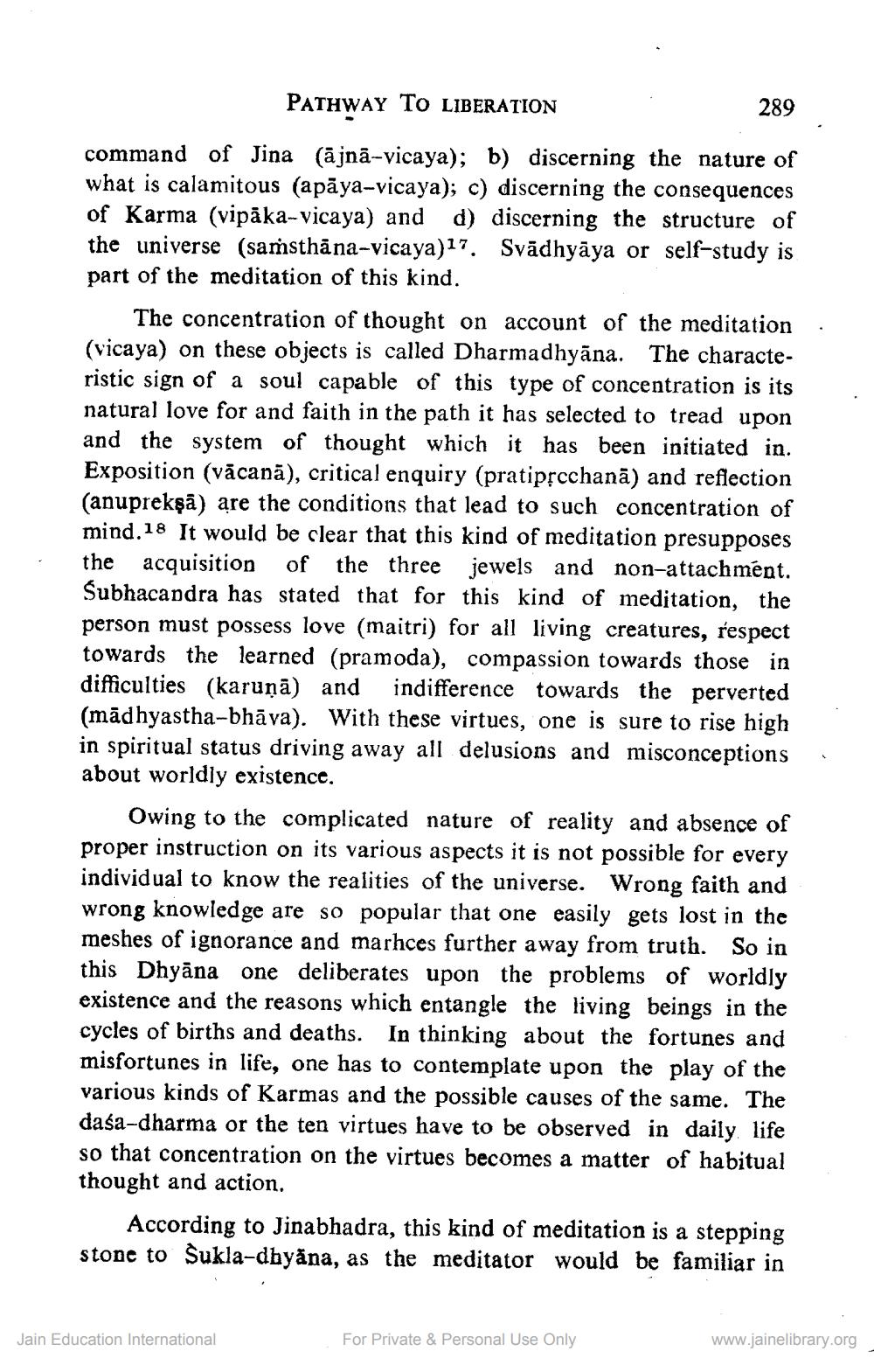________________
Pathway TO LIBERATION
289
command of Jina (ājnā-vicaya); b) discerning the nature of what is calamitous (apāya-vicaya); c) discerning the consequences of Karma (vipäka-vicaya) and d) discerning the structure of the universe (samsthäna-vicaya)17. Svādhyāya or self-study is part of the meditation of this kind.
The concentration of thought on account of the meditation (vicaya) on these objects is called Dharmadhyāna. The characteristic sign of a soul capable of this type of concentration is its natural love for and faith in the path it has selected to tread upon and the system of thought which it has been initiated in. Exposition (vācanā), critical enquiry (pratipfcchanā) and reflection (anuprekşā) are the conditions that lead to such concentration of mind.18 It would be clear that this kind of meditation presupposes the acquisition of the three jewels and non-attachment. Subhacandra has stated that for this kind of meditation, the person must possess love (maitri) for all living creatures, respect towards the learned (pramoda), compassion towards those in difficulties (karuņā) and indifference towards the perverted (mādhyastha-bhāva). With these virtues, one is sure to rise high in spiritual status driving away all delusions and misconceptions about worldly existence.
Owing to the complicated nature of reality and absence of proper instruction on its various aspects it is not possible for every individual to know the realities of the universe. Wrong faith and wrong knowledge are so popular that one easily gets lost in the meshes of ignorance and marhces further away from truth. So in this Dhyāna one deliberates upon the problems of worldly existence and the reasons which entangle the living beings in the cycles of births and deaths. In thinking about the fortunes and misfortunes in life, one has to contemplate upon the play of the various kinds of Karmas and the possible causes of the same. The daśa-dharma or the ten virtues have to be observed in daily life so that concentration on the virtues becomes a matter of habitual thought and action.
According to Jinabhadra, this kind of meditation is a stepping stone to Sukla-dhyāna, as the meditator would be familiar in
.
Jain Education International
For Private & Personal Use Only
www.jainelibrary.org




